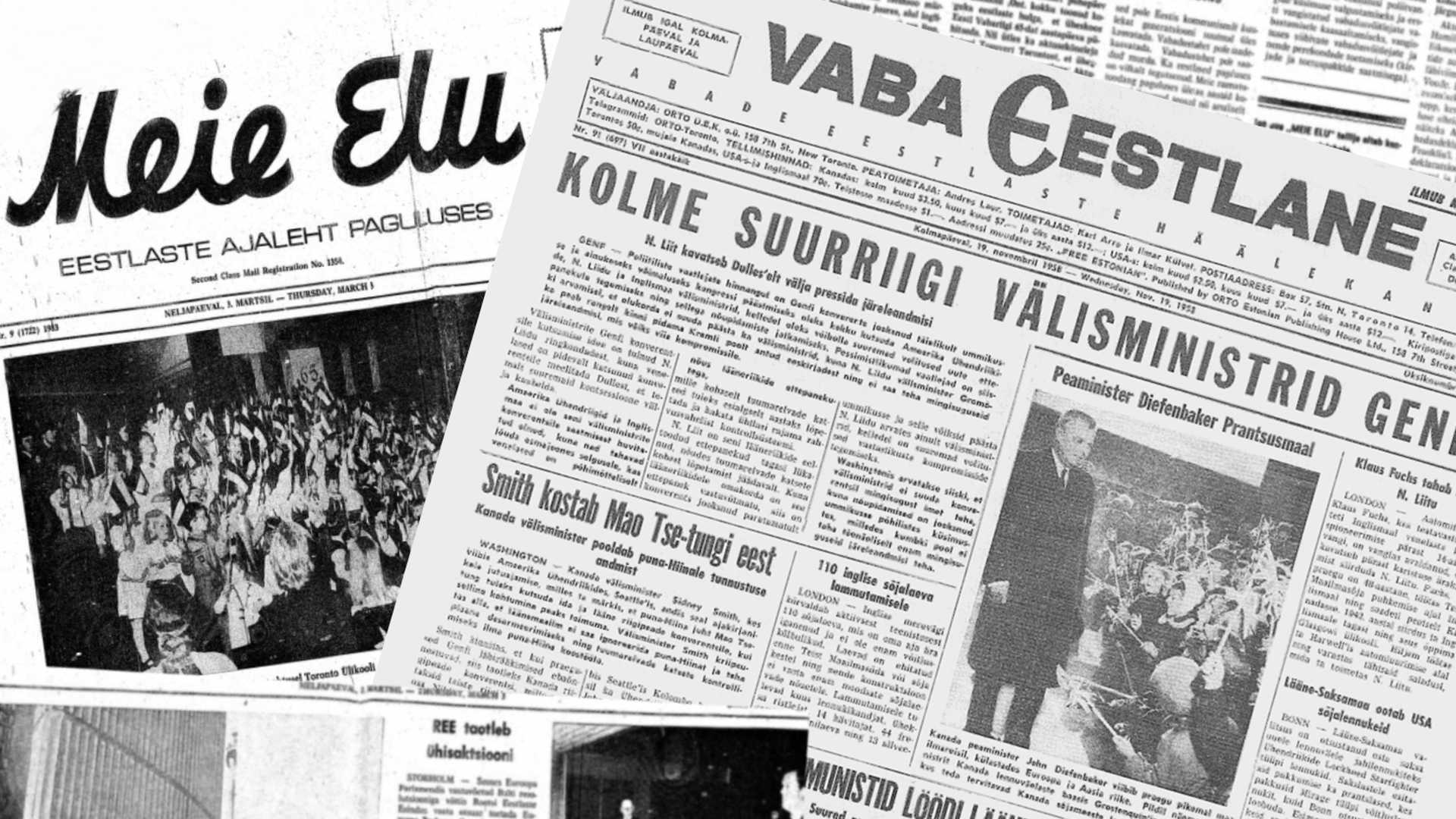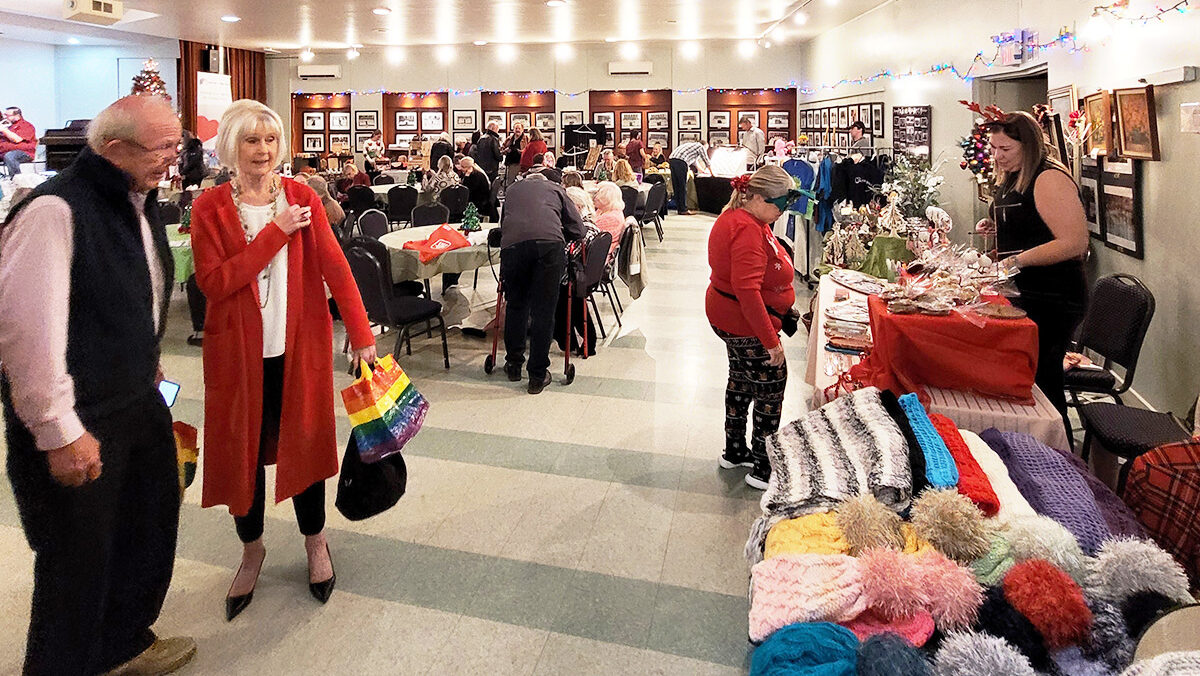This commitment to Estonian-Canadian news didn't start from nothing in 2002, though. The source of this vision goes back to the 1950s, before Eesti Elu, when there was Vaba Eestlane(Free Estonian) and Meie Elu (Our Life).
Take a look for yourself on the dea.digar.ee site to reveal what people were reading in Vaba Eestlane from 1952 to 2001. Right away, you'll notice how many issues of the newspaper came out every month. The newspaper was published by ORTO Estonian Publishing House Ltd., at first coming out every Wednesday and Saturday, switching to Tuesday and Friday in February 1969, and then Tuesday and Thursday from 1976 until December 2001.
At the helm was peatoimetaja Andres Laur and editors Karl Arro and Ilmar Külvet, working from an office space at 158 7th Street, in what's now the New Toronto neighbourhood of Etobicoke.
Reading the newspaper's edition from Wednesday November 19th, 1958 shows some of the prevailing topics on people's minds at the time. The headline focuses on diplomacy and United States Secretary of State, John Foster Dulles: “KOLME SUURRIIGI VÄLISMINISTRID GENFI… [Nõukogude] Liit kavatseb Dulles'elt välja pressida järeleandmisi.” (“THE FOREIGN MINISTERS OF THREE GREAT STATES TO GENEVA… the Soviet Union intends to squeeze concessions from Dulles.”)
Just below that is a short report on Canadian Secretary of State Sidney Smith, who suggested that Chairman Mao Zedong should be invited to a future conference of heads of state in Asia. Elsewhere on the front page is an update from East Berlin and coverage of Prime Minister John Diefenbaker's visit to France on a world tour, greeting the children of Canadian military personnel.
Stemming from the political climate of that time, instead of news from Estonia, attention is given to growing tensions between the United States and the Soviet Union. These journalists were sharing a timely Estonian perspective on the events of the Cold War.
Within Simon Fraser University's digitized newspapers collection, an edition of Meie Elu—published between 1950 and 2001— from Thursday March 3rd, 1983, starts out with an emphasis on Estonian independence ideals.
The top story of this issue reports on Colonel Ylo Anson's speech at the celebrations of the 65th anniversary of the Republic of Estonia. The paper notes how Anson, “based on international agreements, characterized our country as the defenders of our homeland, who were not supported by Moscow.”
Throughout their existence, these two newspapers not only reported the news, but were like bulletin boards for local Estonian organizations. In the above-mentioned issue of Meie Elu, there's a posting about an upcoming meeting of the Saarlaste Ühing Torontos (an association of people from Saaremaa) urgently asking members to attend the meeting in preparation for the upcoming Esto '84 festival. If you missed the memo in a letter, personal phone call, or by word of mouth, you would be reminded here.
In the 1958 issue of Vaba Eestlane, readers were informed of key dates before and after they occurred. For example, the newspaper reported on the celebration of the University of Tartu's 326th anniversary in Montréal and the fourth Laulupidu in Stockholm that was due to take place in 1961.
Looking at these newspapers today, we can recall the inner workings of a community in words and photos. But a newspaper is more than just a historical document for future enjoyment, it's an immediate tool crafted by editors, writers, designers, and printers. And for Vaba Eestlane, in 1958, you could access this tool for only 12 dollars a year. Plus the 50 cents it cost to send it by mail in Toronto (70 cents if you lived elsewhere in Canada, in the US, or in England).
After the biggest stories on the front page, side-by-side with the ristsõna puzzle and the jokes in the naljanurk, one can examine Estonian-Canadian life through an economic lens—advertisements. Ads in the newspaper tell us the kind of products and services readers spent money on.
Evidently there was a lot of financial incentive for businesses to promote themselves to the large Estonian community. If you were moving anywhere in Ontario or Montréal, you could hire Baltic Movers. In Meie Elu, space was given to Latvian-owned Century Aluminum Installers and the “Soome pagar” (“Finnish baker”) Hillside Bakery and Delicatessen on Lawrence Avenue. Lawyers and notaries, chiropractors, optometrists, electricians, travel agents, and tailors all join their ranks, allowing readers to support local business owners.
Major Canadian institutions like the Bank of Montreal and Canada Post decided to place Estonian language advertisements in Vaba Eestlane, the latter leaving a notice for readers about when to send mail and packages if they wanted them to arrive in Europe in time for Christmas.
Among products accommodated for in the paper were nylon töö sokid (work socks) made by Penmans, with a “tugevdatud kand ja varvaste osa” (“reinforced heel and toe.”)
Intriguingly, even mayoral candidate Joseph Cornish placed an advertisement in Vaba Eestlane ahead of Toronto's 1958 municipal election. The ad says “See on teie valida…'Joe' Cornish… teie Mayor'iks. Dünaamiline juhtimine. Suuteline administratsioon.” The place of advertisements continues in our community newspaper today, but one big difference is that now, they are in English, too.
In both of these publications, we see the format that is now combined and translated into its descendant, the current Eesti Elu / Estonian Life. The news comes and goes, but the effort made to engage and support the community will continue.
This article was written by Vincent Teetsov as part of the Local Journalism Initiative.



